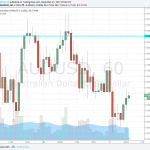The United States and Brazil might have switched their ideas about trade, but that hasn’t brought them any closer to finding agreement. For the longest time, Washington pushed for free trade in the Americas, only to meet Brazilian intransigence. Now, the roles are reversed. Brazil has begun pushing liberalized trade, only to encounter a United States intent on pursuing protectionism. But regardless of their altered positions, the disconnect between the two countries has remained a constant. A Brazilian delegation will meet with US Commerce Secretary Wilbur Ross this week in Washington to learn more about a potential increase in US tariffs on Brazilian steel, an action that could prompt a tit-for-tat response by the South American powerhouse. Steel, however, is just one bone of contention in the relationship as political disagreements have also split Washington and Brasilia, ensuring that there is little chance the pair will find accord anytime soon.

Maintaining the Barriers
For decades, the United States encouraged Brazil to join a free trade area in the Americas, but Brasilia rejected Washington’s overtures as it sought to first consolidate its regional leadership through the Common Market of the South (Mercosur). For Brazil, Washington’s desire to promote free trade in the Americas represented an impediment to the creation of a more autonomous regional South American bloc, such as Mercosur. Additionally, Brazilian industries that had benefited from protectionist measures exerted pressure on the government to reject any US entreaties on free trade. Despite the lack of a free trade deal, Brazil and the United States share significant economic relations. The United States is Brazil’s third-largest trade partner after China and the European Union. In contrast to its trade with China and Europe, however, Brazil generally has run trade deficits with the United States, though it registered a $2 billion trade surplus with the United States last year.
















Leave A Comment